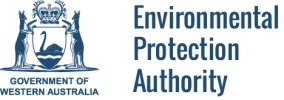The Environmental Protection Authority has backed plans for a more compact city to accommodate 3.5 million people in future and says it’s the best way to protect our environment in the long term.
Releasing advice on Perth’s environmental future, EPA Chairman Paul Vogel said the city could grow without compromising biodiversity, water availability and quality, air quality and amenity – provided proactive strategies were put in place.
Dr Vogel delivered the EPA’s advice, which focuses on the 9,000 square kilometre region from Two Rocks to Myalup and from the coast to Wooroloo and Lane Poole Reserve in the east, to Environment Minister Albert Jacob this week.
“We are at the cross roads. With most of the State’s population living in the Perth-Peel region - in one of the world’s 34 biodiversity hotspots - we must ask ourselves how we want our city to develop and what quality of life we want for our population,” he said.
Dr Vogel said the environmental cost of continuing the urban sprawl was incalculable and strategic land use planning was needed for population growth to occur without further compromising the environment.
“On the Swan Coastal Plain, which is west of the scarp, 71 per cent of vegetation has been cleared and our wetlands, estuaries and waterways are showing signs of ecological stress,” he said.
“Also, a number of the original species that were present in the Perth-Peel area at the time of settlement have disappeared from the region, including 12 mammals such as the Numbat, Brush-tailed Phascogale, Western Ringtail Possum and Pygmy Possum. There are 46 bird species in decline and many of the plants are also now restricted and threatened with extinction.”
Dr Vogel said the ‘urban heat island effect’ - a phenomenon in which air temperatures are higher in urban areas than surrounding rural areas - in conjunction with increasing temperatures due to a changing climate, was also impacting people’s health.
“Heat-wave related deaths in Perth are predicted to more than double by 2050. Furthermore, reducing the adverse health effects of air pollution on a growing population is important. We’ll also need to contend with the amount of waste likely to be generated which will rise from 6.7 million to about 9.7 million tonnes a year,” Dr Vogel said.
“We have to do better in the future if we are to manage the impacts of an extra 1.5 million people.”
Dr Vogel said the EPA’s advice delivered 36 recommendations focusing on air and water quality, improving the Swan and Canning rivers and Peel-Harvey Estuary as well as measures to protect biodiversity, the marine environment, human health, heritage and amenity.
He said the EPA considered the likely environmental impacts of future urban, industrial and rural residential development, raw material needs (sand, limestone, clay, hard rock extraction) and infrastructure.
Key recommendations to the State Government include the need to:
- Add important areas of remaining native vegetation to the conservation estate;
- Implement additional measures to reduce water use and increase water recycling and update and implement policies to protect quality of groundwater for drinking water supplies;
- and expand air quality management plans to cover the Peel region and install permanent air monitoring stations in the Perth CBD and Mandurah;
- Implement a long-term integrated transport plan that reduces traffic congestion, improves air quality and encourages increased uptake of walking, cycling and public transport; and
- Take steps to counteract impacts to air quality, human health and amenity from the ‘urban heat island effect’, such as through tree planting.
Dr Vogel said the environment needed to be appropriately valued in decisions weighing up economic, social and environmental needs, particularly considering the risks posed by a changing climate.
“We must move from the ‘business-as-usual’ approach and take bold steps to build on our environmental successes and openly acknowledge - and remedy - our failures so that future generations can see and experience our complex, fragile and unique environment,” he said.
“Using existing cleared land and smart infill will deliver a city that is more liveable and sustainable. Planning and designing cities to improve our connection with nature is vital to our physical and mental health and well-being.”
Dr Vogel said the EPA’s interim advice was aimed at influencing both the State and Commonwealth Governments as they continue to examine the environmental implications of Perth and Peel’s future development through the Strategic Assessment of the Perth Peel Regions.
The EPA will deliver its final strategic advice in 2016.
Perth-Peel Facts
Environment
- More than 2,000 native plant species, of which around 10% are of conservation significance
- 330 mammals, birds, frogs and reptiles and an estimated more than 1,000 insect species and 300 spiders
Cumulative impacts to date (before additional population growth)
- 71% of vegetation cleared on the Swan Coastal Plain (west of the scarp)
- 46 bird species in decline and 12 mammals have disappeared
- Peel-Harvey and upper reaches of Swan-Canning under ecological stress (algal blooms, fish kills)
- 5 vegetation complexes have dropped below 10% remaining
- 21% of Bush Forever areas are in secure conservation
Future @ 3.5 million
- Heat wave related deaths may double
- 9.7 million tonnes of waste a year likely to be generated (now 6.7 million)
- By 2030, surface water for human use (irrigation, watering parks and gardens, drinking) will be 24% less than currently available
Media Contact only: Nadia Miraudo 0400 866 450 / Stacey Molloy 0437 861 315 (Fridays)
Contact the Office of the OEPA: info@epa.wa.gov.au or 6145 0800
